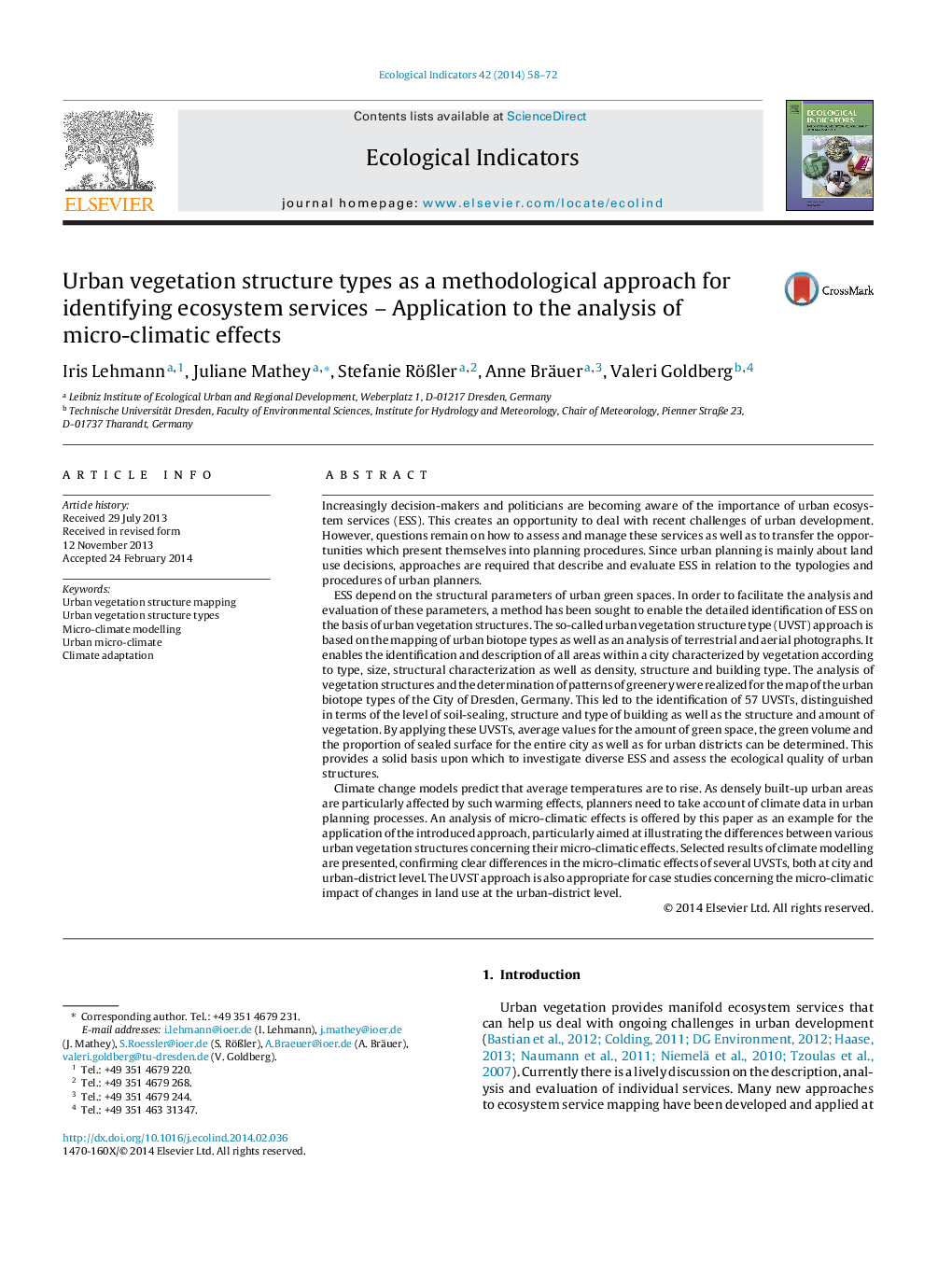| کد مقاله | کد نشریه | سال انتشار | مقاله انگلیسی | نسخه تمام متن |
|---|---|---|---|---|
| 4373143 | 1617159 | 2014 | 15 صفحه PDF | دانلود رایگان |
• Cities are characterized by vegetation according to type, size and structure.
• We developed the so-called urban vegetation structure type (UVST) approach.
• The UVST approach determines the vegetation structure of a whole city.
• It provides a basis for investigating ecological services of urban areas.
• It is suitable as base for spatial planning (e.g. climatic modelling, scenarios).
Increasingly decision-makers and politicians are becoming aware of the importance of urban ecosystem services (ESS). This creates an opportunity to deal with recent challenges of urban development. However, questions remain on how to assess and manage these services as well as to transfer the opportunities which present themselves into planning procedures. Since urban planning is mainly about land use decisions, approaches are required that describe and evaluate ESS in relation to the typologies and procedures of urban planners.ESS depend on the structural parameters of urban green spaces. In order to facilitate the analysis and evaluation of these parameters, a method has been sought to enable the detailed identification of ESS on the basis of urban vegetation structures. The so-called urban vegetation structure type (UVST) approach is based on the mapping of urban biotope types as well as an analysis of terrestrial and aerial photographs. It enables the identification and description of all areas within a city characterized by vegetation according to type, size, structural characterization as well as density, structure and building type. The analysis of vegetation structures and the determination of patterns of greenery were realized for the map of the urban biotope types of the City of Dresden, Germany. This led to the identification of 57 UVSTs, distinguished in terms of the level of soil-sealing, structure and type of building as well as the structure and amount of vegetation. By applying these UVSTs, average values for the amount of green space, the green volume and the proportion of sealed surface for the entire city as well as for urban districts can be determined. This provides a solid basis upon which to investigate diverse ESS and assess the ecological quality of urban structures.Climate change models predict that average temperatures are to rise. As densely built-up urban areas are particularly affected by such warming effects, planners need to take account of climate data in urban planning processes. An analysis of micro-climatic effects is offered by this paper as an example for the application of the introduced approach, particularly aimed at illustrating the differences between various urban vegetation structures concerning their micro-climatic effects. Selected results of climate modelling are presented, confirming clear differences in the micro-climatic effects of several UVSTs, both at city and urban-district level. The UVST approach is also appropriate for case studies concerning the micro-climatic impact of changes in land use at the urban-district level.
Journal: Ecological Indicators - Volume 42, July 2014, Pages 58–72
